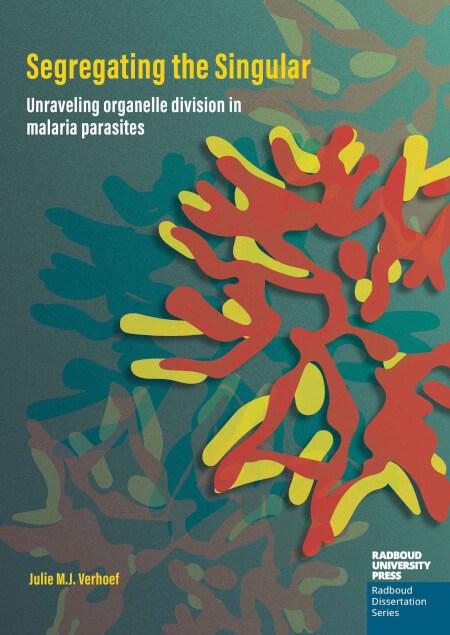Segregating the Singular: Unraveling organelle division in malaria parasites
Keywords:
Malaria, Mitochondrion, Apicoplast, Organelle divisionSynopsis
Malaria is a devastating parasitic disease causing many deaths, predominantly in children below 5 years old. The rapid emergence of resistance to current antimalarials emphasizes the urgent need for the development of novel antimalarial drugs. The two so-called endosymbiotic organelles of the parasite, the mitochondrion and apicoplast, present promising drug targets due to their unique biology. It is crucial for the parasite to properly divide and distribute these organelles during its replication process in the human and mosquito host. However, how these processes exactly happen, and which proteins are involved remained unknown. Here, advanced microscopy techniques were used to visualize organelle division in great detail. Additionally, we found a potential function of a mitochondrial protein, STOML, in regulation of mitochondrial protein quality control. These new findings contribute to a better understanding of these crucial biological processes.

Published
Series
Categories
License

This work is licensed under a Creative Commons Attribution-NonCommercial-NoDerivatives 4.0 International License.

